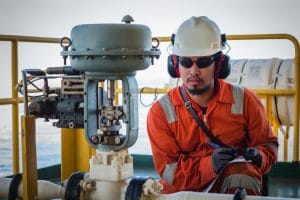 Modern heat exchangers have inherent value when it comes to handling most common electrical thermal management needs. For example, the natural way they handle electrical waste heat while minimizing a company’s need for energy and downtime for maintenance and repairs has created significant cost savings across virtually every industry. That inherent value has been expanded and added to in several ways throughout the years as heat exchangers have become even more adaptable to various industry needs. However, for some industries, that value may be locked away behind one important consideration – the need for rugged thermal management solutions that can handle tougher than usual operating conditions.
Modern heat exchangers have inherent value when it comes to handling most common electrical thermal management needs. For example, the natural way they handle electrical waste heat while minimizing a company’s need for energy and downtime for maintenance and repairs has created significant cost savings across virtually every industry. That inherent value has been expanded and added to in several ways throughout the years as heat exchangers have become even more adaptable to various industry needs. However, for some industries, that value may be locked away behind one important consideration – the need for rugged thermal management solutions that can handle tougher than usual operating conditions.
A glance at how heat exchangers work
A heat exchanger is a thermal management solution designed to absorb and transfer heat rapidly within a loop. The goal for most industrial applications is to prevent electrical overheating by transferring electrical waste heat as it’s generated. This stops it from accumulating and forming heat pockets that could destroy sensitive electrical components, and it doesn’t require the use of chilled air to do it. The fluid is usually water or another eco-friendly solution, and the heat exchanger apparatus can be designed as cold plates or heat pipes to provide the maximum flow and heat transfer necessary for a given application.
Industries that need more durable solutions
The beauty of heat exchangers is that their designs are typically much simpler than traditional solutions. Heat pipes and cold plates contain few or no external moving parts beyond one or a few fans (in certain applications). This reduces their need for energy and reliance on routine maintenance, which means companies can save in several areas simply by streamlining their thermal management processes. However, in certain industries, such as oil and gas production, military and space technologies, and more, applications have to endure more than routine thermal management concerns.
The strength of custom heat exchangers
Conventional heat exchangers weren’t designed to withstand the intense conditions that come with such operating in such industries. They can streamline thermal management for most applications, but they wouldn’t last long under the immense heat and pressure, potentially harmful contaminants, and other concerns that come with working in hazardous conditions. Fortunately, modern heat exchangers have also adapted to fill that need, with variations that are designed to meet different enclosure safety standards (depending on the needs of each application).
For more information about heat exchangers that are as tough as you need them, call Noren Thermal Solutions in Taylor, TX, at 866-936-6736.







